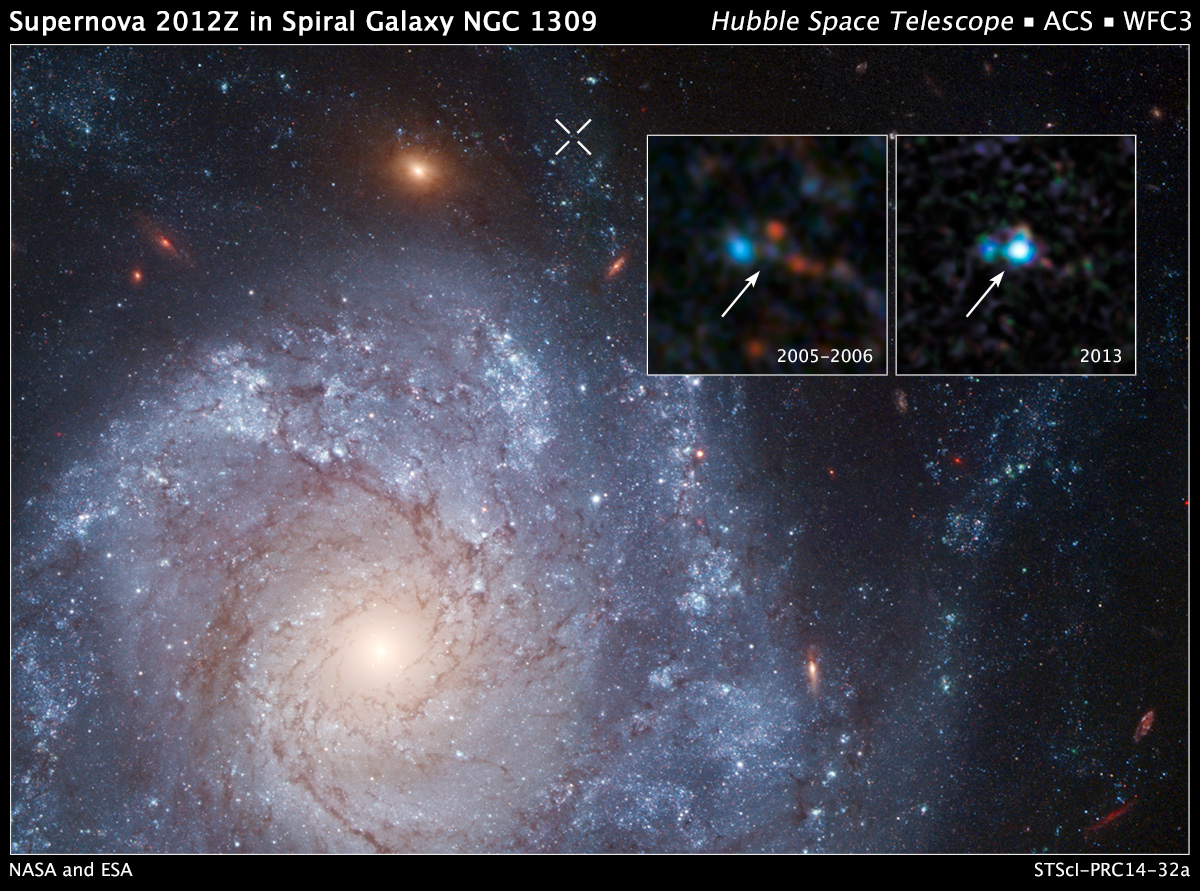
Credit: Hubblesite.org
Last June astronomers detected the brightest supernova that has ever been observed, known as ASASSN-15lh. The object had been classified as hydrogen-poor superluminous supernova fuelled by a magnetar, altough it is hotter and more luminous than any other hydrogen–poor supernova thus making the classification uncertain. Now scientists try to uncover the nature of this mysterious source using new observational data.
Ultraviolet and optical photometry was obtained using the Swift/Ultraviolet Optical Telescope (UVOT), X-ray data from the X-ray Telescope on Swift and spectroscopy with the Hubble Space Telescope (HST). The new observations revealed a remarkable Ultraviolet rebrightening that took place two months after the peak brightness and has not seen in previous superluminous supernova, while Ultraviolet spectra from HST exhibited a lack of broad emission or absorption features also dissimilar to superluminous supernova. This new findings make the classification of ASASSN-15lh even more complex and the development of a model that will successfully describe the source, more challenging.
Astronomers estimated that a source like ASASSN-15lh could be detected at redshift beyond 4, when the universe was only about 1.5 billion years old, using the Large Synoptic Survey Telescope (LSST). This would allow scientists to study the properties and conditions of the galaxies that host these sources as well as the interstellar and circumgalactic media at such early times in the history of the universe.
Publication: Brown et al. 2016
